Any teacher who has seen words like “nice” and “good” one too many times in student writing can vouch for the importance of teaching shades of meaning. When kids have the understanding that synonyms can be closely related and differ in intensity, it helps them make stronger word choices in their writing. As if that isn’t enough of a bonus already, it’s a big ticket to improvement in reading comprehension and vocabulary development too.
And luckily, this skill can be a lot of fun to teach! Here are 5 activities to add to your shades of meaning idea bank:
1. Anticipatory Activity
An anticipatory activity can be a good way to introduce shades of meaning, just like it is for many concepts. Rather than flat out tell students, “We’re going to be learning about shades of meaning today” you could do a quick little engaging exercise that just starts to get the wheels turning. One activity off the top of my head that lends itself well to this skill is Which word doesn’t belong?
Give your students 5 words (you could just write them on the board, have them projected onto a screen, etc.). Four of the words should be synonyms of varying degrees, and one should be a word that is not a synonym with the other four. For example:
giant, enormous, large, quiet, big
Tell the kids that you want to tell them to choose a word that doesn’t belong with the others, and they have to give a reason WHY. Explain that there can be more than one correct answer, as long as they give a valid reason. You could have them write their answer on a sticky note, on white boards, or just come up with it mentally.
Once they’re ready with their answers and reasons, facilitate a discussion. Have them share with a partner what word they chose and why, and choose a few students to share with the whole group.
Typically, you’ll have some kids who choose a different word than the more obvious choice. For example, instead of selecting the word quiet as the word that doesn’t belong, a child might choose enormous because it’s longer than the others (or even better, because it’s the only one with more than 2 syllables). Another might say giant doesn’t belong because it’s a noun (as in the Jolly Green Giant), and the other words are adjectives.
And that’s okay! Even if those kids didn’t make the synonym connection, they are still practicing the important skill of analyzing words. It might even turn into a quick little review or teachable moment about another language arts skill, like syllables, parts of speech, or phonics. There’s no harm in that!
Once students have shared those alternative possibilities, bring the focus back to a discussion about why quiet doesn’t belong. Use their ideas to lead into an introduction of shades of meaning, and the explanation that there can be more than one word to describe the same thing in varying degrees.
You might choose to go a step further and then have students analyze the four synonyms that “belonged” together more closely, and rank them from weakest to strongest based on their meaning.
Extension for enrichment: If any of your students are in need of more of a challenge, you could also have the kids be the ones to come up with the 5 words for this activity (4 synonyms, and 1 word that doesn’t belong). Have a partner or the whole class figure out which one of the words from the student-created list doesn’t belong.
2. Seasonal Craftivities
Depending on the time of year, students can enjoy making a fun craftivity while working to expand their vocabulary and analyze words based on their shades of meaning. Here are a few of my favorites for fall, winter, and spring.
Each of these spring and winter crafts come with pre-made sets of synonyms that can be used for ideas of words to sort and write when making the crafts.
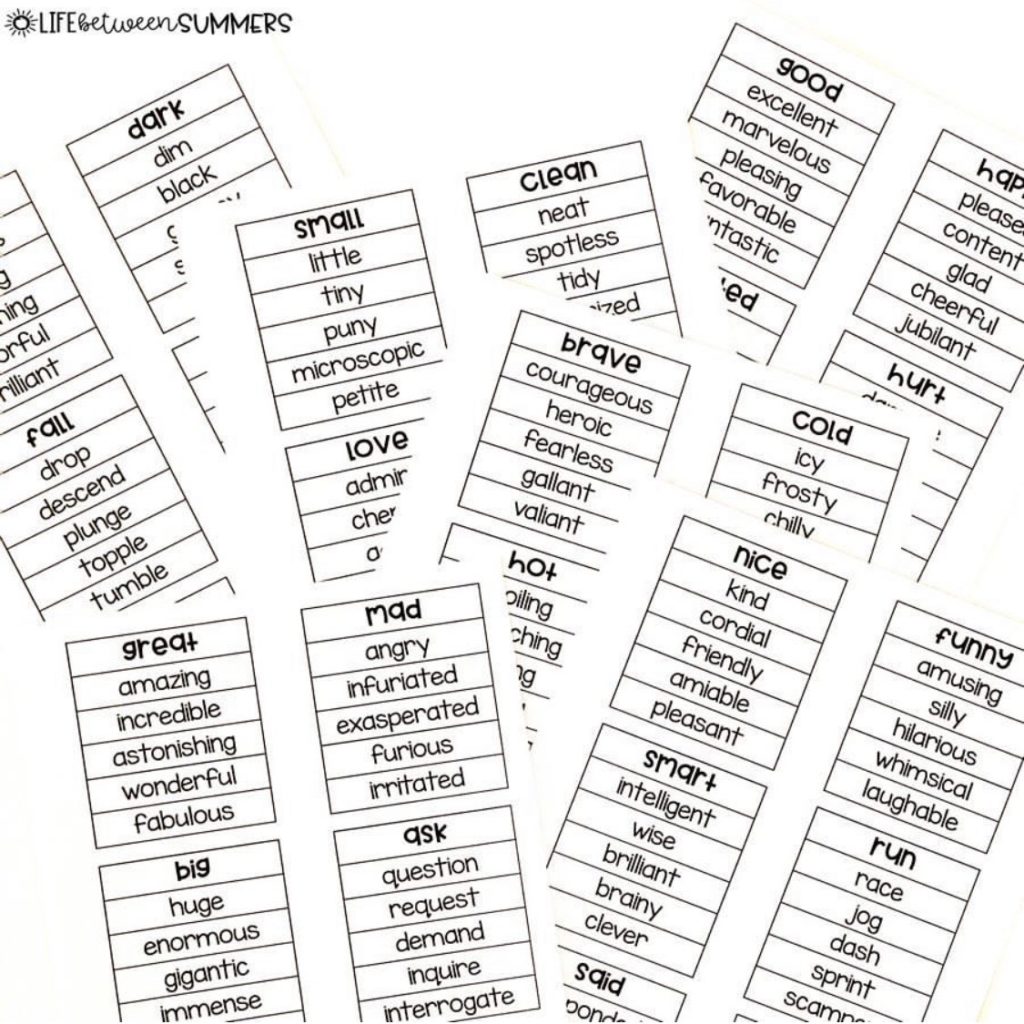
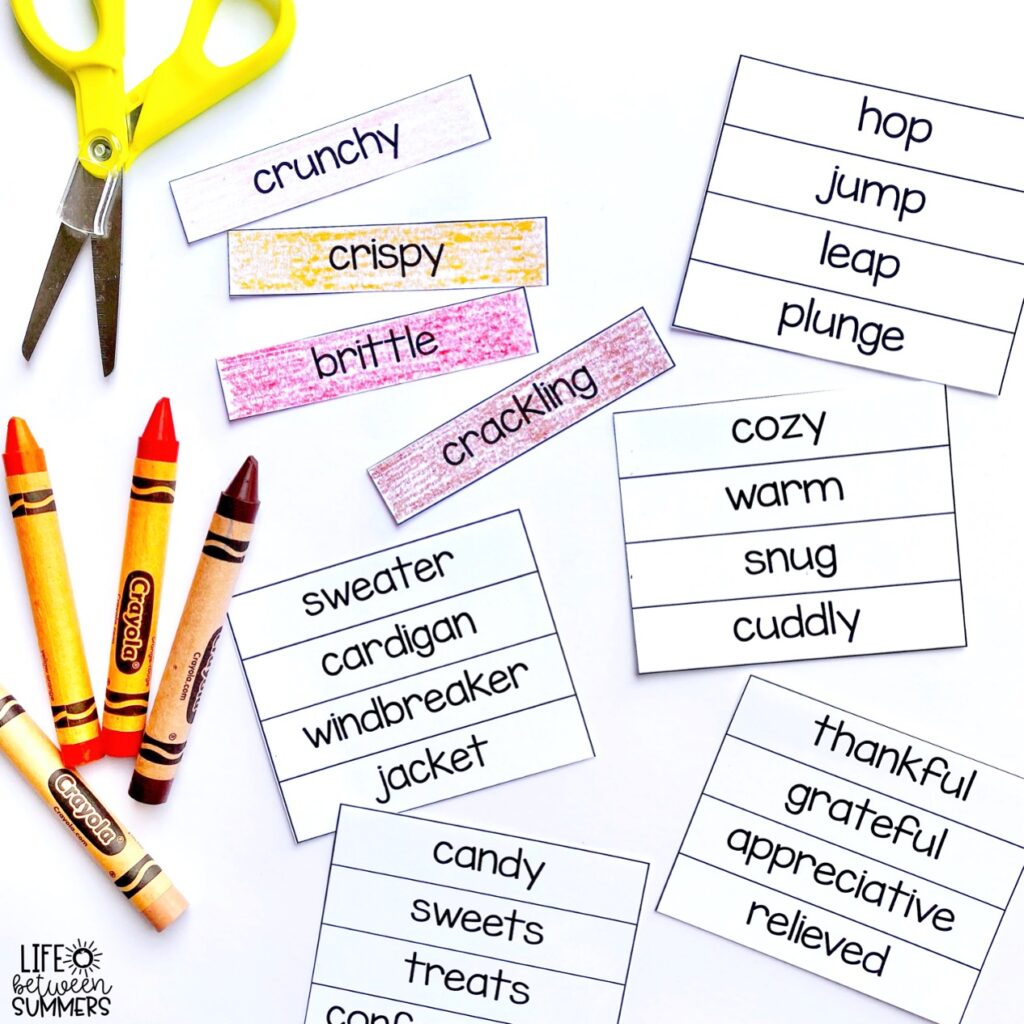
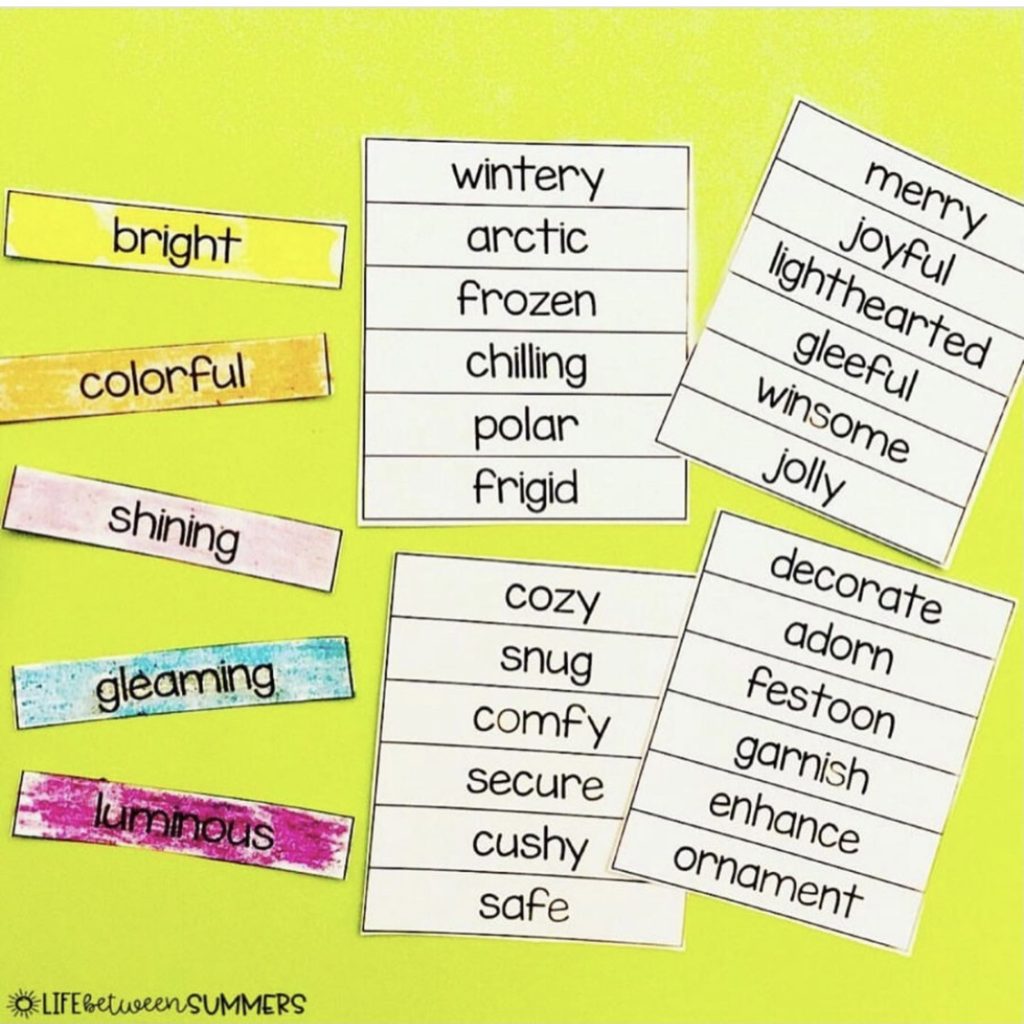
These same pre-made sets are also huge time savers whenever you need examples of synonyms to use during lessons on shades of meaning, and they can be re-purposed for word sorts and activities during literacy centers, reading groups, etc.
Another benefit of doing these craftivities is that they make for a cute AND functional bulletin board display. When students are working on their writing and need to come up with a more descriptive adjective or verb to use, you have a huge built-in thesaurus on the wall that they can walk over and refer to.
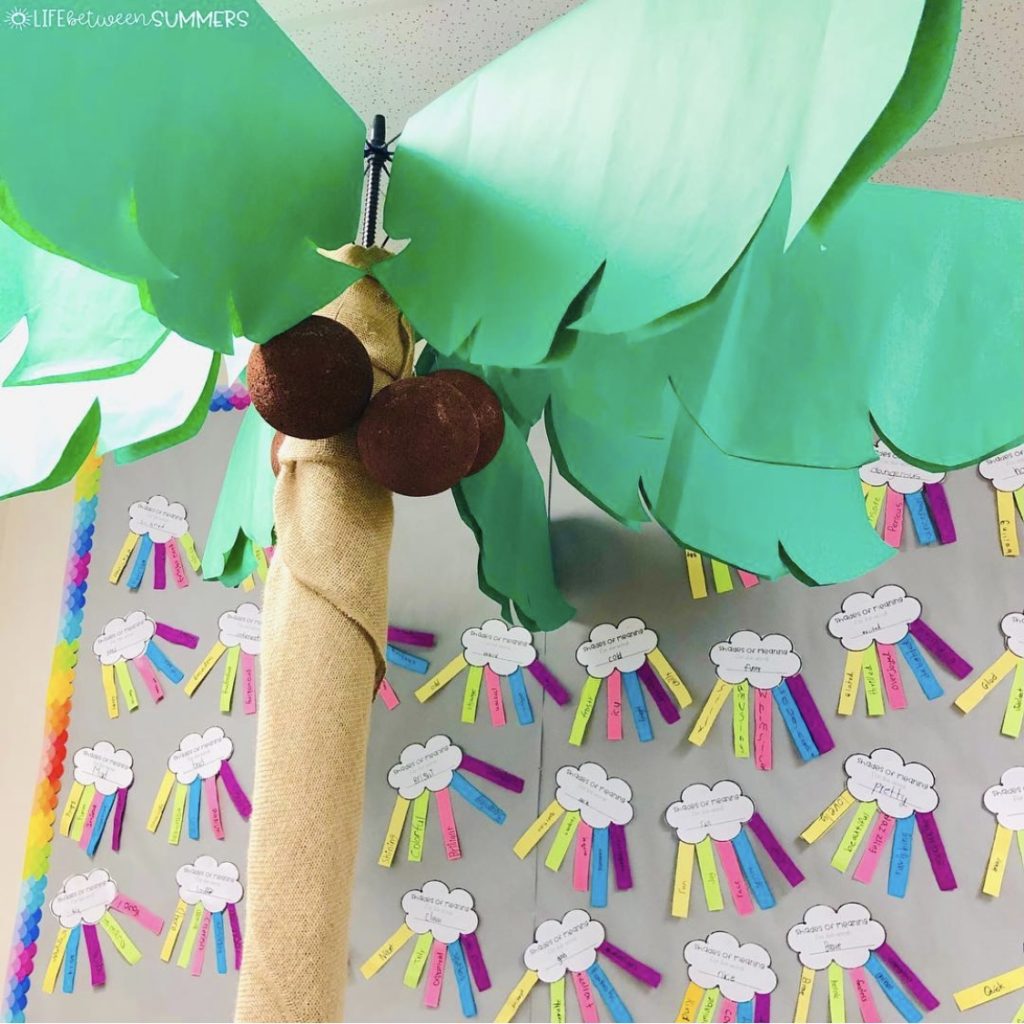
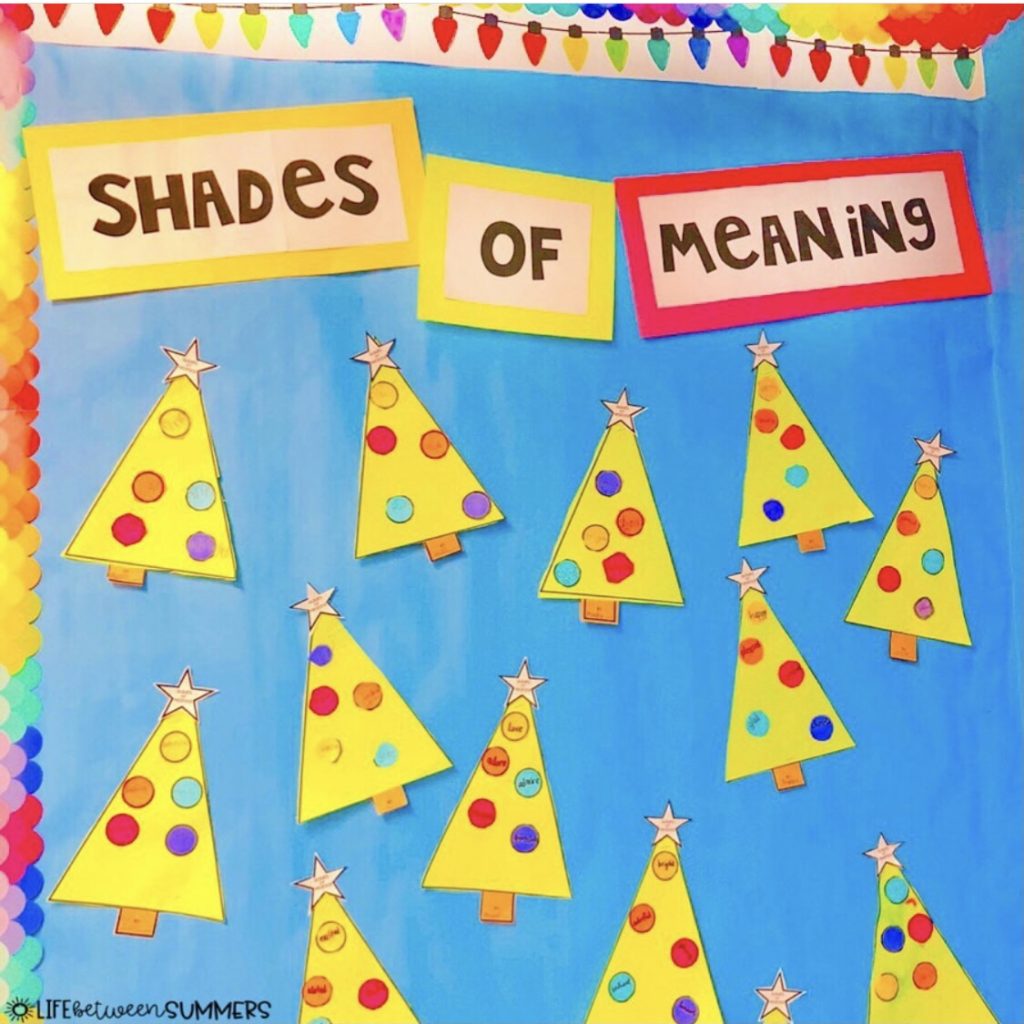
You can even make your own bulletin board headings or hanging banners to give your display a cozy and seasonal feel.
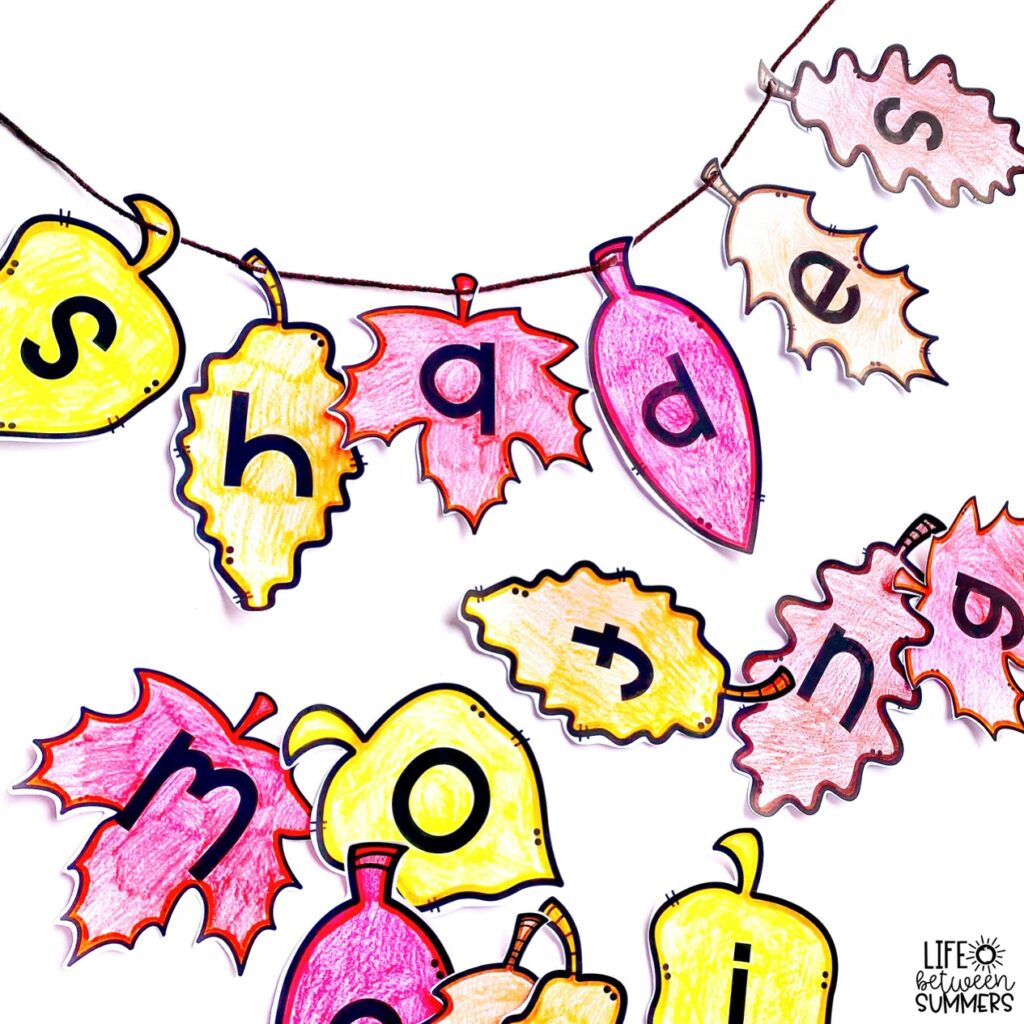
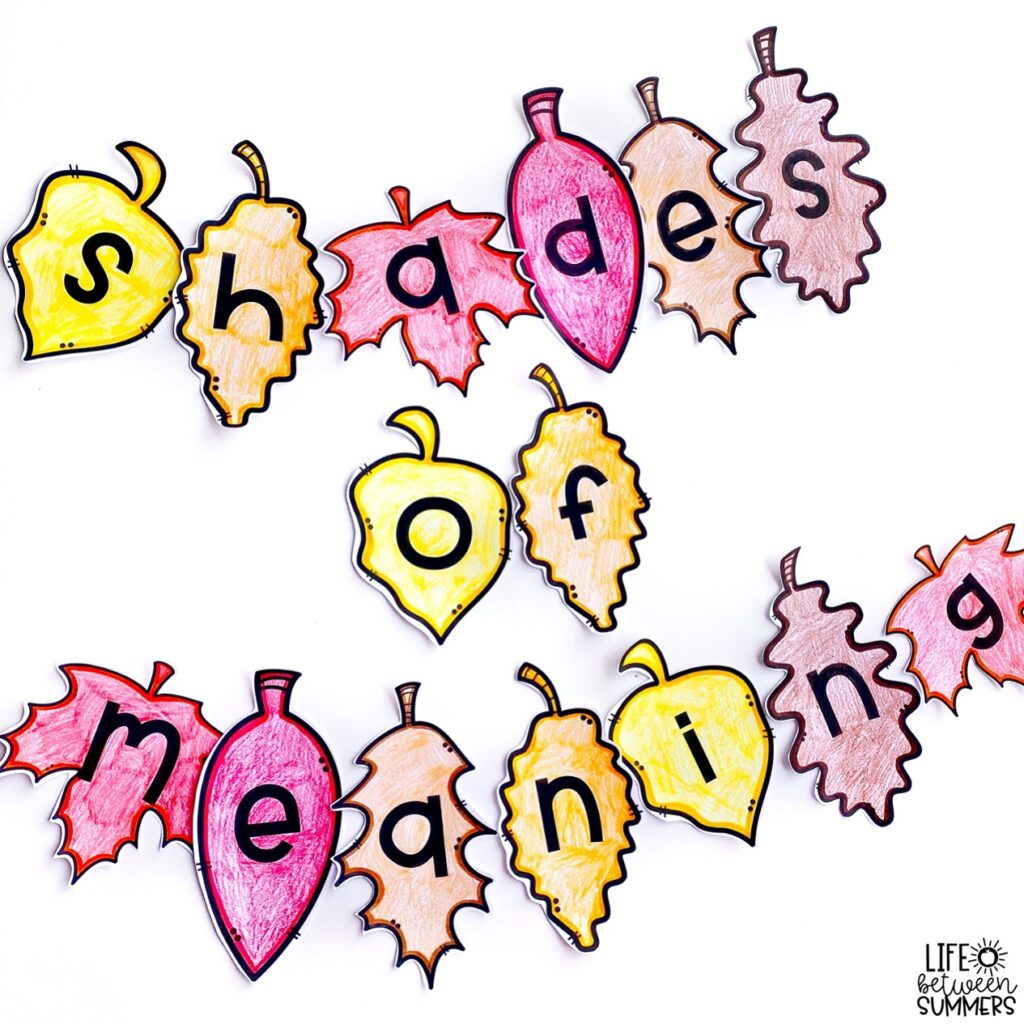
Click below to find each of these resources right here in my online store, and all of the craftivities are also available on TPT. They come individually, or you can bundle and save.
Shades of Meaning Holiday Trees
Shades of Meaning Craftivities Bundle
3. Color Swatches
For endless possibilities in teaching shades of meaning, swing by your local Home Depot, Lowe’s, or paint shop, and grab some color paint swatches. These can be utilized to practice shades of meaning in all kinds of ways, and here are just a few.
- Have students choose an adjective or verb (or you might give them a word bank of words to choose from). Students list synonyms for that chosen word from weakest to strongest on the color swatch (writing the “weakest” word on the lightest color, and then progressing to darkest). A couple of side notes about the photo below:
- I used mailing labels to cover the text with the names of the paint colors, which were smack in the middle. And while a couple of paint names such as “California Wine” appealed to me personally, obviously not the most appropriate for school.
- Anyone else feeling that darkest shade at the bottom this past year? 😉
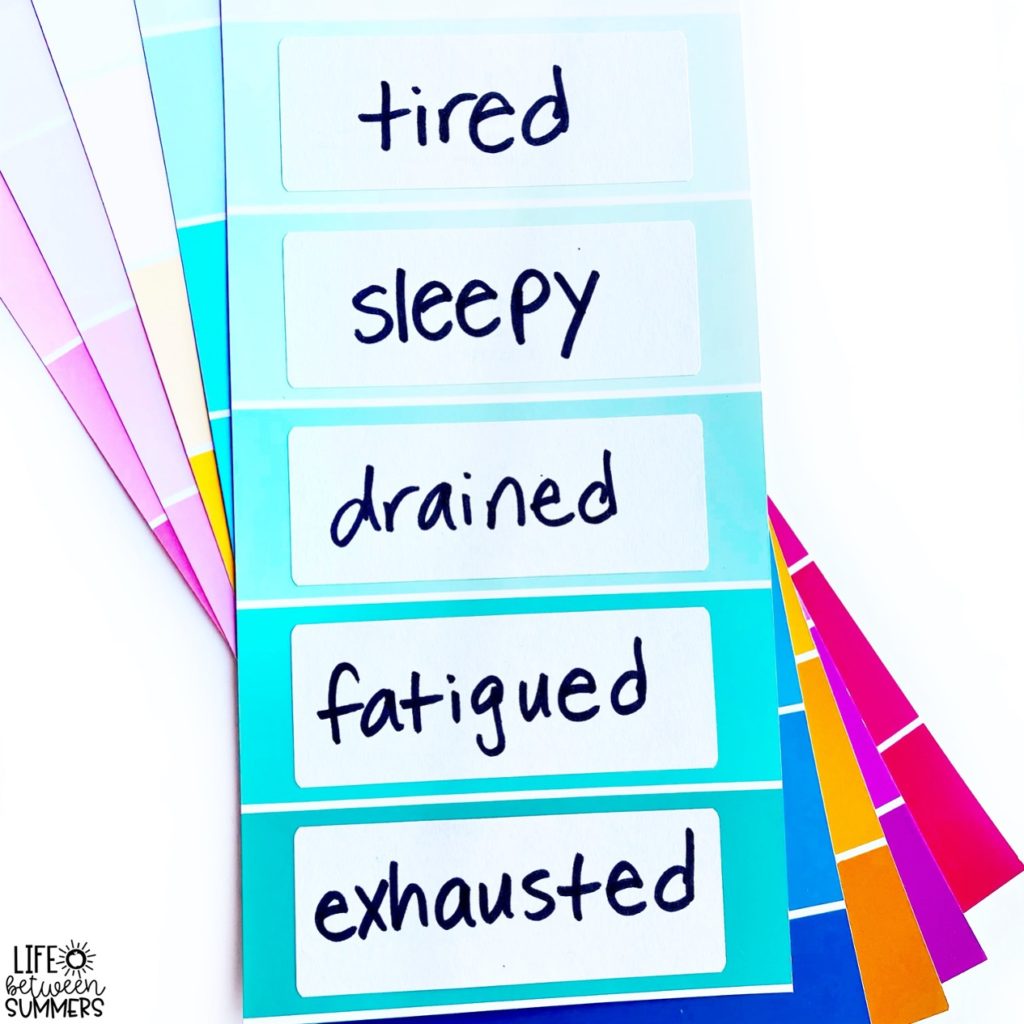
- If you’d like students to practice using a thesaurus, they could use one to look up synonyms for their chosen word and fill them in on their color swatch.
- Cut up multiple color swatches into individual pieces and mix them up. Have students use these pieces for a word sort.
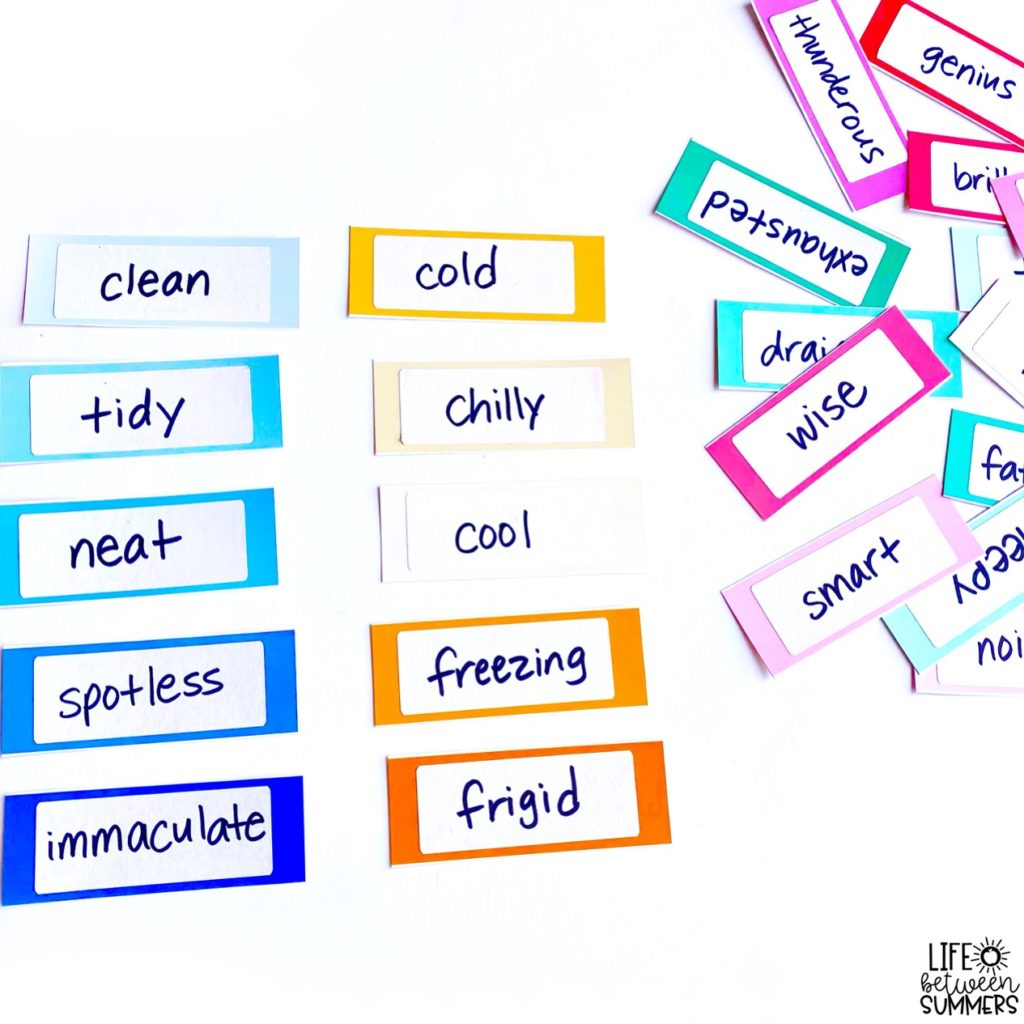
4. Synonym Hunt
This is an easy opportunity to get students up and moving out of their seats! A synonym hunt could be done using color swatches, index cards, or as a time saver, you could also use the print-and-go sets of synonyms that are already included with the rainbow and tree craftivities I shared above.
If using swatches, have the groups of synonyms written on each swatch ahead of time.

Cut them up by individual color, making sure to save one piece from each color group and set it aside.
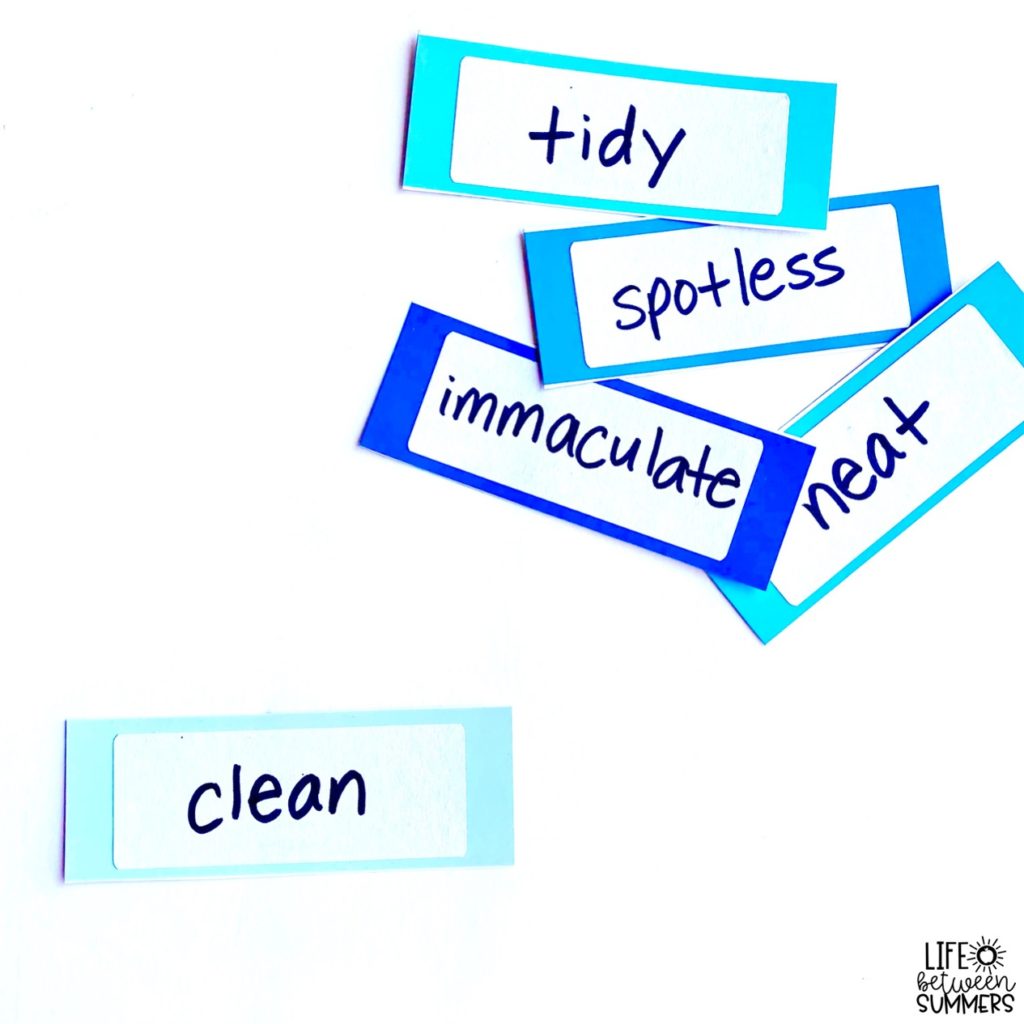
Place the rest of the pieces all around the classroom on student desks and tables. Give each student (or set of partners, depending on how many swatches you want to use) the one piece you saved from each swatch.
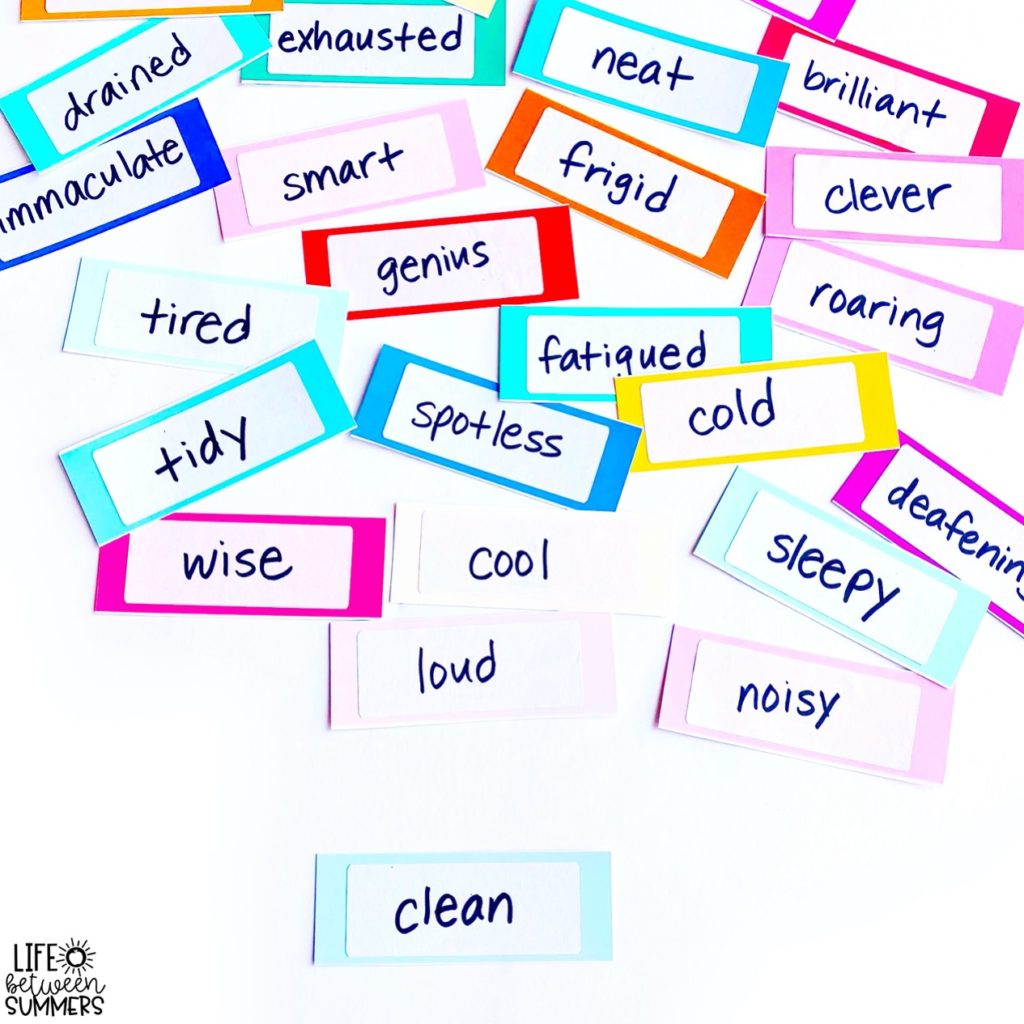
Have students go on a synonym hunt around the classroom to find all of the other words that go with their swatch piece. Once they’ve found all the pieces, have them sort their words from weakest to strongest based on the shades of meaning.
This same activity has some options for differentiation when using index cards or my pre-typed synonym strips instead of color swatches. If you want to make it easier for students to find the synonyms that go together, you can use crayon to color code the pieces with varying shades of the same color. To make it more of a challenge, do not use any color coding at all. Students have to rely solely on their knowledge and discussion of the word meanings to find the words that go together.
Another variation of the synonym hunt could be to give each student a word/swatch piece and have them walk around the room to find the other people who have a word that goes in the same group of synonyms. The group can then do an extension activity, such as lining themselves up in order from the weakest to strongest based on the meaning of their words.
5. Make it a Center
Once you’ve done some whole group instruction and activities for shades of meaning, you could provide additional opportunities for independent or guided small group practice. Jenga is always a fun and engaging way for students to gain more practice in a specific skill during literacy centers.
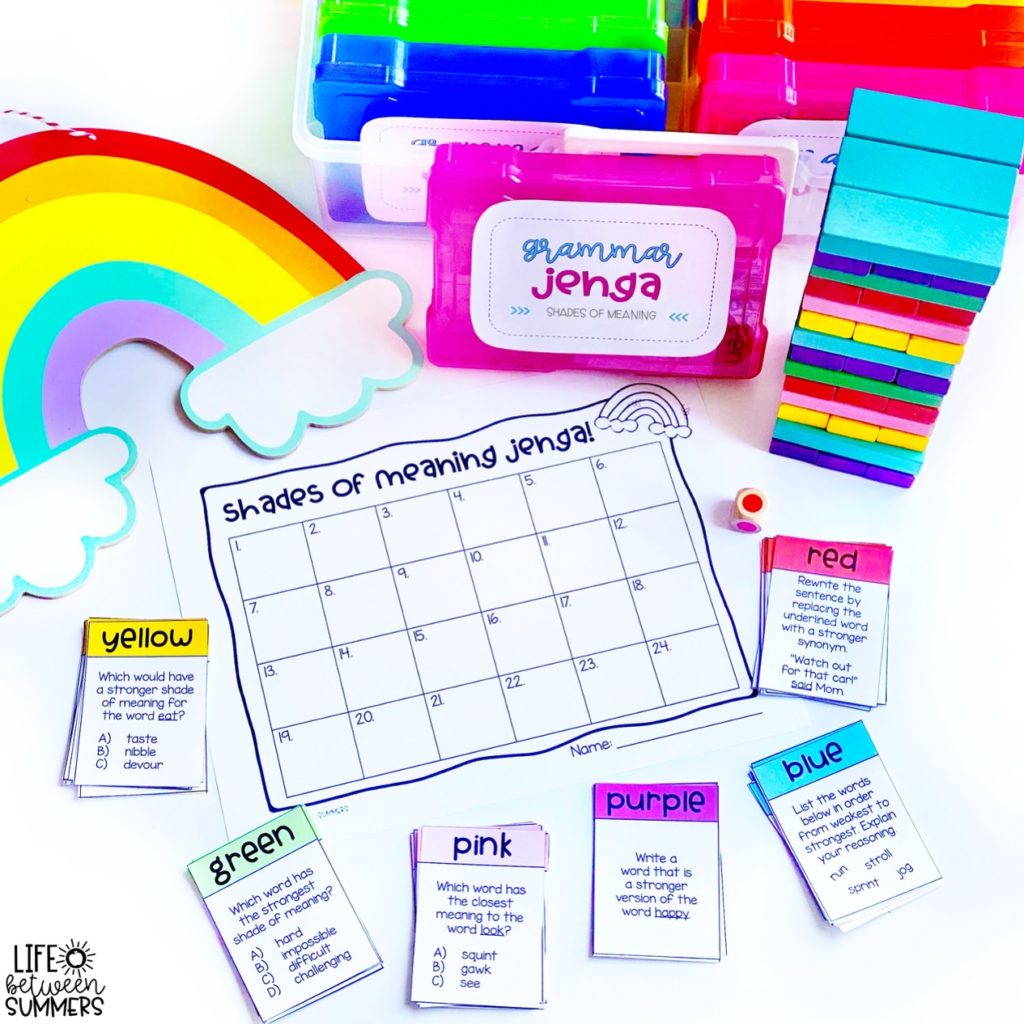
This Shades of Meaning Jenga game can be found here in my shop and also on TPT, along with Jenga games for other grammar and language arts skills. The game set pictured above provides students with practice in the Common Core standards below:
CCSS.ELA-LITERACY.L.1.5.D
Distinguish shades of meaning among verbs differing in manner (e.g., look, peek, glance, stare, glare, scowl) and adjectives differing in intensity (e.g., large, gigantic) by defining or choosing them or by acting out the meanings.
CCSS.ELA-LITERACY.L.2.5.B
Distinguish shades of meaning among closely related verbs (e.g., toss, throw, hurl) and closely related adjectives (e.g., thin, slender, skinny, scrawny).
What are some of your favorite ways to teach shades of meaning? Not only would other teachers enjoy hearing your ideas in the comments, but I’m sure they’d like, love, and adore you for it!


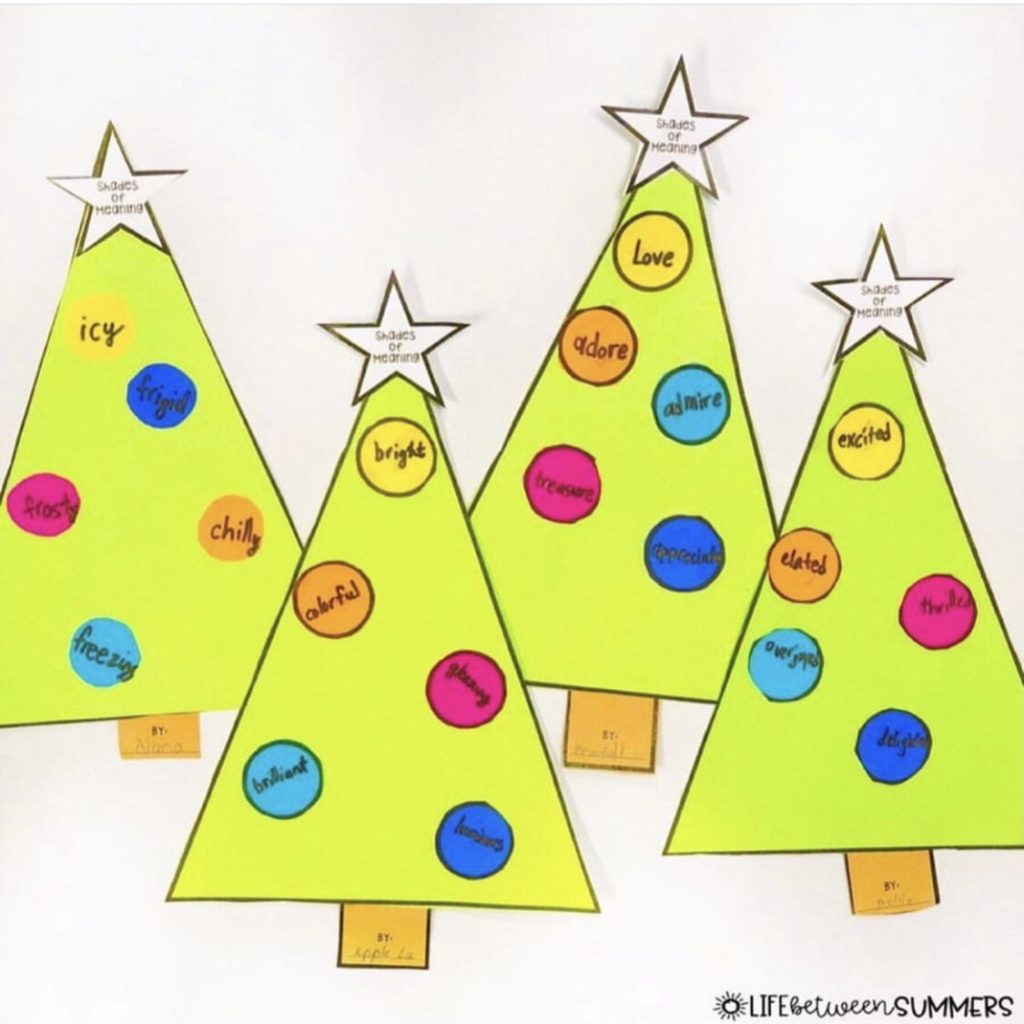
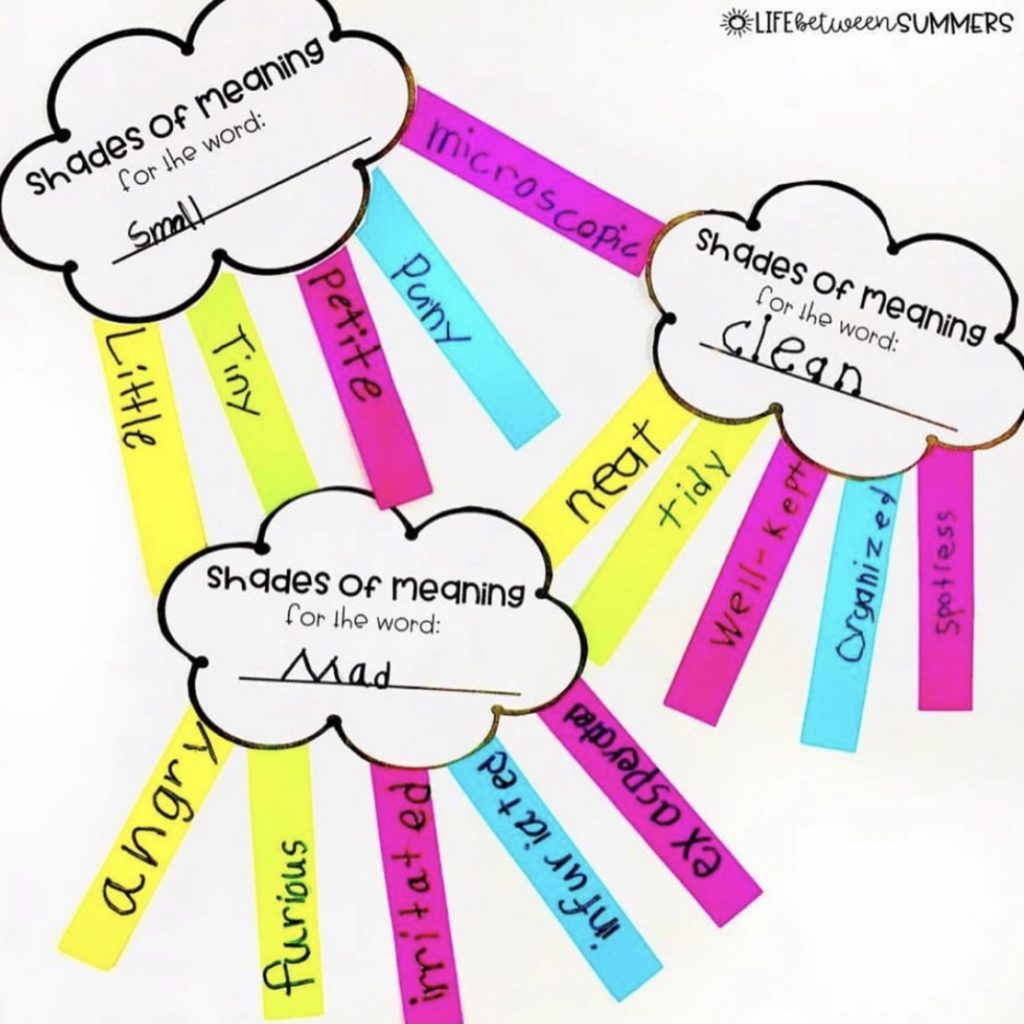

Leave a Reply
You must be logged in to post a comment.